

| Home Page | Overview | Site Map | Index | Appendix | Illustration | About | Contact | Update | FAQ |
 |
 |
There are 69 cell lines registered with NIH - National Institutes of Health, 15 of these are available for shipment. President Obama signed an executive order on March 9, 2009 to lift the ban under the Stem Cell Policy in the Bush era. He also directed the NIH to develop revised guidelines to ensure that such research "never opens the door to the use of cloning for human reproduction". Legally it is possible that Obama's successor can in turn reverse the Obama executive order. Now back to the stem cell: |
Figure 10-13a |
Figure 10-13b Stem Cell Cycle |
|
After 3 - 4 divisions of totipotent cells, there follows a series of stages in which the cells become increasingly specialized. The next stage of division results in pluripotent cells, which are highly versatile and can give rise to any cell type except the cells of the placenta. At the next stage, cells become multipotent, meaning they can give rise to several other cell types, but those types are limited in number. An example of multipotent cells is hematopoietic cells - blood stem cells that can develop into several types of blood cells, but cannot develop into brain cells. At the end of the long chain of cell divisions that make up the embryo are "terminally differentiated" cells - cells that are permanently committed to a specific function. Figure 10-13a shows the pathway from embryonic stem cell to multipotent stem cell and on to the different type of specialized cells.
Multipotent stem cell is self-renewing. When the stem cell divides, one of the two daughter cells may go on to give rise | to other types of cell, whereas the other daughter cell
remains a stem cell, capable of dividing again and always giving one daughter to diversification. (See Figure 10-14b)
Blood cells in human body are replaced every 120 days. The replacement comes from the multipotent stem cell in the bone marrow. Skin cells are shed every few weeks. The replacement comes from the multipotent stem cell at the base of the skin (the basal layer). Scientists are still looking for the the neural stem cell. Its identity, location and potential remain unclear. It has been long held that differentiated cells cannot be altered or caused to behave in any way other than the way in which they have been naturally committed. New research, however, has called that assumption into question. In recent stem cell experiments, scientists have been able to persuade blood cells to behave like neurons, or brain cells. |
 |
stem cell culture (from mouse for now). The process involves carefully controlled external environment (such as number of stem cells ~ 9000 in this case, the concentration of growth factors, and the addition of cell-culture ingredient called Matrigel etc). After introducing a right mixture into the stem cells, the rest is up to themselves to run their internal programs without any other supporting tissue. The optic cup emerge naturally in about 24 days (see Figure 10-13c). This feat has obvious implication for repairing vision. | |
Figure 10-13c From Stem Cells to Optic Cup [view large image] |
Further researches are expending into the areas of pituitary gland, cerebral cortex, a complete photoreceptors, and cerebellum, but not the whole brain - that would be enormously difficult and ethically fraught. |
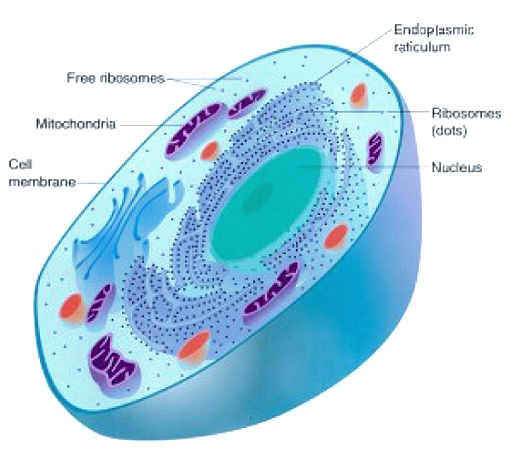 |
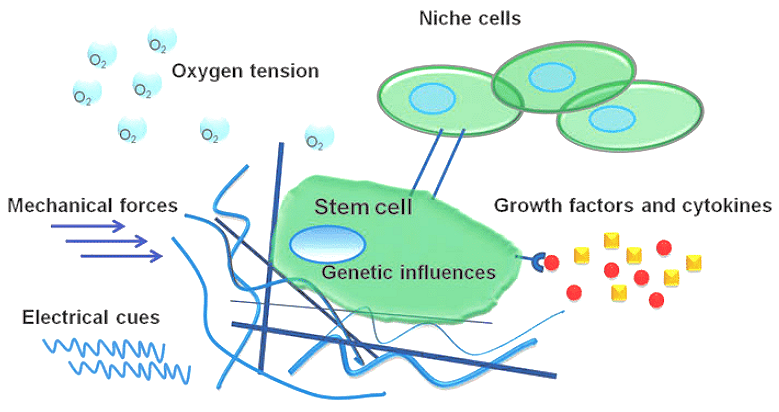 |
Stem cells are similar to common cells. It contains a nucleus, mitochondria, endoplasmic reticulum, ribosomes, membrane ... (Figure 10-13d) - nothing out of the ordinary. What makes them standing out is their ability of differentiating into specialized cell type by cue (Figure 10-13e). As explained further in the followings, there are different types of stem cells according to their potency (ability) and different kinds of activation cues for activating different genes (to produce specialized cell type). |
Figure 10-13d Stem Cell |
Figure 10-13e Activation Cues [view large image] |
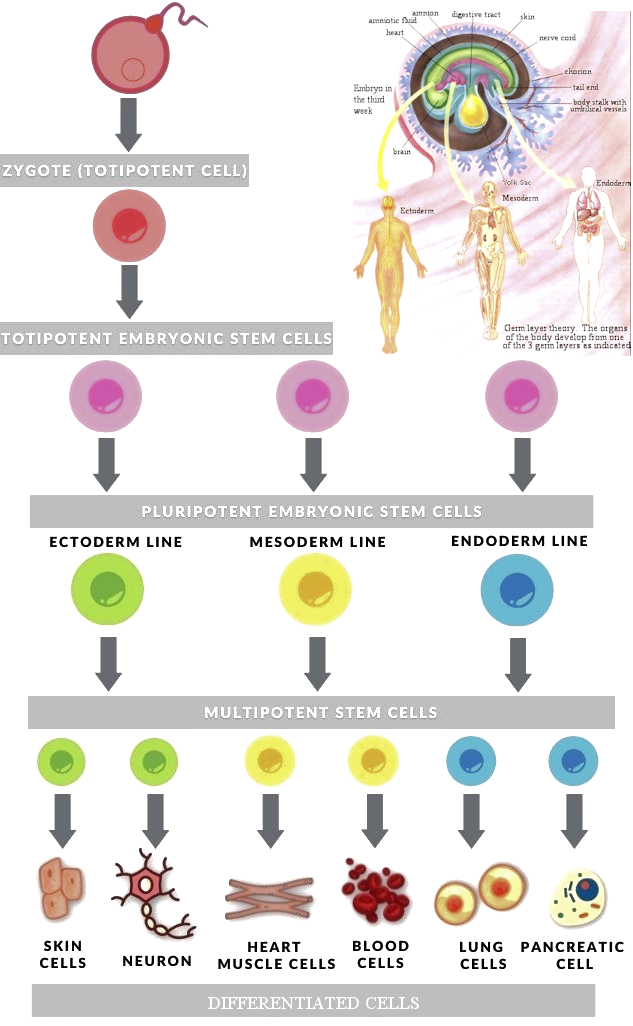 |
|
Figure 10-13f Stem Cell Types [view large image] |
progenitor stem cells persist in highly restricted regions in the adult vertebrate brain and continue to produce neurons throughout life. A good example is the hippocampus which makes memory. |
 |
In the micro-environment, mechanical forces can influence processes such as differentiation of stem cells and metastasis of cancer cells. Mesenchymal stem cells (MSC) have been shown to commit to specific phenotypes depending on tissue-level elasticity. For example, soft substrates that mimic the brain are shown to be neurogenic, stiffer substrates that mimic muscle are myogenic, while rigid substrates that mimic bone are osteogenic. |
Figure 10-13h Mechanical Cue [view large image] |
Thus, daily activities such as physical exercise, massge, acupuncture, ... can also promote the gene expression in stem cell (Figure 10-13h). |
 |
|
Figure 10-13i Growth Factor Cue [view large image] |
 |
 Notch; CXCL12 Notch; CXCL12  CXCR4; Wnt CXCR4; Wnt  Frizzled (receptor). HSC intrinsic transcription factors regulate signaling process to keep HSC in a quiescent stage (see details in "Genetic and Epigenetic Mechanisms That Maintain Hematopoietic Stem Cell Function"). Frizzled (receptor). HSC intrinsic transcription factors regulate signaling process to keep HSC in a quiescent stage (see details in "Genetic and Epigenetic Mechanisms That Maintain Hematopoietic Stem Cell Function"). |
Figure 10-13j |
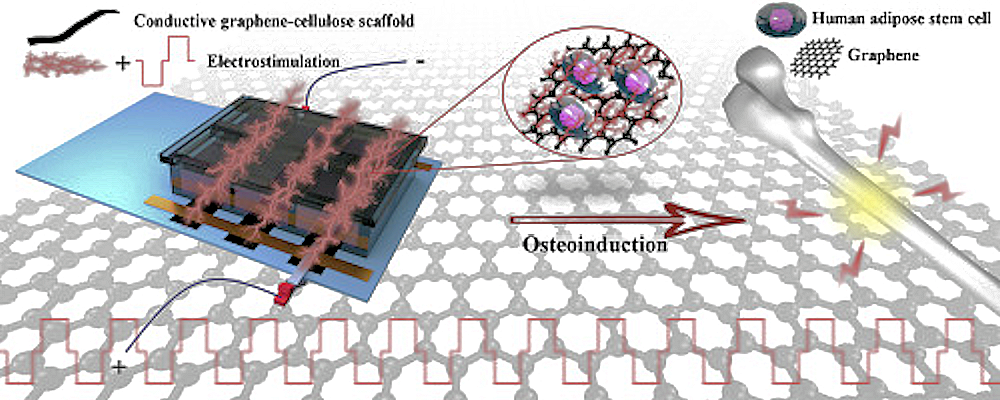 |
affect cell phenotype. High-intensity ES of > 100 V/cm is also favorable for cell proliferation in a short period (< 1 ms) single stimulation, but excessively high intensity leads to cell death (see for example : "Electrical stimulation as a novel tool for regulating cell behavior in tissue engineering"). |
Figure 10-13l |
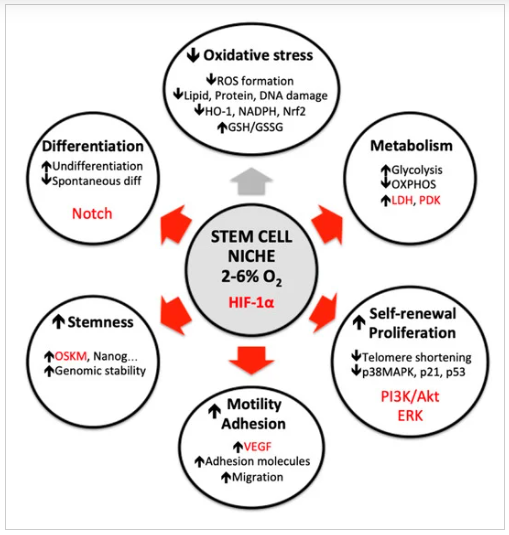 |
|
Figure 10-13m |
 Figure 10-13n Normal O2 Partial Pressure (PO2) in Various Tissues Figure 10-13n Normal O2 Partial Pressure (PO2) in Various Tissues  . .
|
 |
Such low oxygen requirement could be related to the fact that life started in the absence of oxygen long before the advent of photosynthesis which makes oxygen and is actually poisonous to early life (see Figure 10-13o). Somehow, the incorporation of ATP producing mitochondria in the eukaryotic cell to generate energy has the problem resolved and life proceeds to develop with some lingering relics. This process (and its reverse) is summarized by one single chemical equation : |
Figure 10-13o |
 |
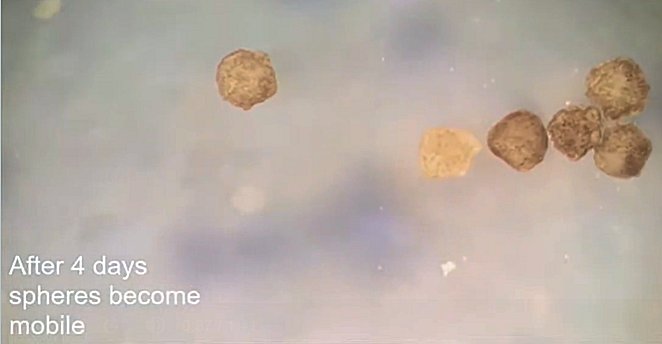 |
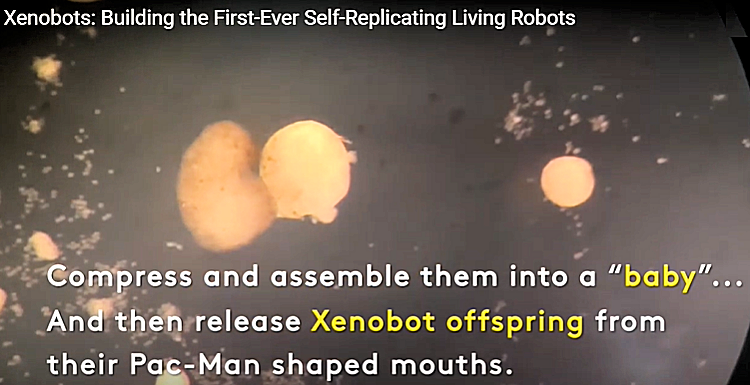 |
for research into human genetic disease (complementary to the more commonly used mouse and zebrafish). Recently, it is found that the stem cells extracted from the early embryo can replicate itself (touted as a new way of reproduction - the so-called "kinetic replication" ???). Closer examination reveals that it can be explained by the various cues (as presented above) on the stem cells. |
Figure 10-13g2 Xenobot, |
Figure 10-13g3 Xenobot, |
 Figure 10-13g1 Early Embryonic Development of Xenopus [view large image].
Figure 10-13g1 Early Embryonic Development of Xenopus [view large image]. ), which lists its activities including swimming, running around in maze, tunneling in narrow capillary, interacting with particles, and self-repairing when injured, ...
), which lists its activities including swimming, running around in maze, tunneling in narrow capillary, interacting with particles, and self-repairing when injured, ... ) to make the xenobots (bot is now appended to indicate it is something like a robot) more effective at this type of replication. As shown by the video in Figure 10-13g3 (click
) to make the xenobots (bot is now appended to indicate it is something like a robot) more effective at this type of replication. As shown by the video in Figure 10-13g3 (click  ), the C-shaped "bot" is the most efficient earning the title of "The World's First Self-replcating Living Robot".
), the C-shaped "bot" is the most efficient earning the title of "The World's First Self-replcating Living Robot".